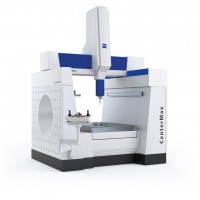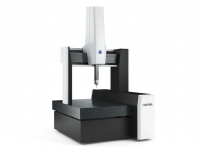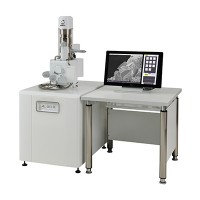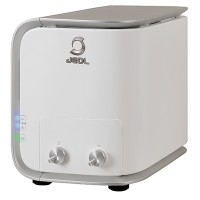-
JSM-7800FPRIME Schottky Field Emission Scanning Electron Microscope
- Post on 27-03-2019 02:27:42 AM - 3066 Views
-
JSM-7800FPRIME delivers the world's best resolution with the incorporation of the newly-developed, super-high resolution Gentle Beam (GBSH). In addition, the maximum probe current of the In-lens Schottky Plus gun has been increased from 200 nA to 500 nA.
In-Lens Schottky Plus Field Emission Electron Gun
Higher brightness is achieved by optimizing the combination of the electron gun and low aberration condenser lens. Probe currents of a few pA to several tens of nA are obtained even with a low accelerating voltage by efficiently collecting the electrons generated by the gun, making it possible to perform high resolution observation as well as high-speed element mapping and EBSD on the nano-scale, while maintaining the smallest objective aperture.
Surface observation using GBSH (Gentle Beam Super High Resolution)
The existing *Gentle Beam (GB) has been improved to apply even higher voltages to the specimen, providing super-high resolution images with low accelerating voltages. GBSH allows you to select the accelerating voltage best suited to the application, from specimen surface observation to nano-scale element analysis.
*Gentle Beam(GB) is a technique of applying a bias voltage to the specimen to reduce the speed of the incident electrons, and accelerate the speed of the emitted electrons.
Top surface imaging using Gentle Beam
By applying a bias voltage to the specimen (GB), the speed of the incident electrons is reduced and the speed of the released electrons is increased. This allows high-resolution images with a good signal-to-noise ratio to be acquired even with low specimen landing voltage. If GBSH mode is used, which allows a higher bias voltage to be applied, higher-resolution observations can be made even at landing voltages of just a few tens of eV.
Acquisition of all information using multiple detectors
The JSM-7800F incorporates 4 types of detectors, including an upper electron detector (UED), upper secondary electron detector (USD), backscattered electron detector (BED), and a lower electron detector (LED). For the UED, the secondary electron and backscattered electron collection can be changed according to the filter voltage, making it possible to select the electron energy for image acquisition. The USD detects the low-energy electrons that are rejected by the filter grid. With the BED, channeling contrast –contrast can be clearly observed by detecting either high or low-angle backscattered electrons. The LED enables acquisition of images with a 3-dimensional appearance, including the surface roughness information from the illumination effects.
-

Unparalleled Stability...
27-03-2019 01:38:04 AM -

The Reference Machine in...
27-03-2019 01:28:20 AM -

SMALL PARTS COUNTER U-60
27-03-2019 01:04:31 AM
- HCMC Office: Block A, Lever 2, Linh Trung Building, No 6-8, Road no 16, Linh Trung Ward, Thu Duc City, HCMC.
- Head Quaters: 427 Le Dai Hanh, Ward 11, District 11, HCM City.
- Hanoi Office: 156A Quan Thanh Str., Ba Dinh Dist., Hanoi City.
- Phone: +84-28-66865303
- Mobile: +84 982 427 168
- Email: dung@ngocminh-ise.com
- Website: http://ngocminh-ise.com














